Everything You Need To Know About Brush Rabbit
Brush rabbits originate in North America’s western coastal areas (Mexico and United States), from the Columbia River of Oregon to the Baja California Peninsula’s southern tip. Its reach goes as far as the eastern parts of the Sierra Nevada and the Cascade mountain areas. These species populate dense, brushy cover, typically chaparral vegetation. It happens in conifer and oak habitats and will live in the field or brush, and create tracks of runways throughout the plants. These rabbits hardly ever leave the brush for long-drawn periods.
There are thirteen recognized subspecies of Brush Rabbit. For example is Sylvilagus bachmani ubericolor, Sylvilagus bachmani cinerascens, Sylvilagus bachmani bachmani, Sylvilagus bachmani exiguus, Sylvilagus bachmani howelli, Sylvilagus bachmani cerrosensis, Sylvilagus bachmani peninsularis, Sylvilagus bachmani mariposae, Sylvilagus bachmani virgulti, Sylvilagus bachmani macrorhinus, Sylvilagus bachmani riparius, Sylvilagus bachmani tehamae, and Sylvilagus bachmani rosaphagus. Brush rabbits are a gregarious species while seeking, but most of them are solitary. They live in different home ranges, male home ranges being on average larger than female home ranges. These creatures are wary and secretive.
Does Brush Rabbit Make Good Pets?
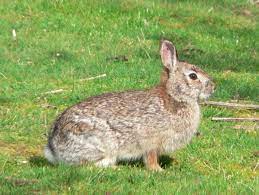 These rabbits are cautious and quiet animals. They usually employ lair, runways, and even holes, even if they are not as broad as other members of their kind. When it feels scary, the brush rabbit’s trait response is its footing thumping. They may remain thump for several minutes. To avoid being caught, these rabbits generally climb trees and shrubs to get away from predators. The sound that the brush rabbits use when they are scared or when they are in pain is sometimes squeaks or cries. To save themselves from their predator, these brush rabbits can sit unmoving for such a long period. They zigzag about 20 or 25 miles an hour when they feel exposed.
These rabbits are cautious and quiet animals. They usually employ lair, runways, and even holes, even if they are not as broad as other members of their kind. When it feels scary, the brush rabbit’s trait response is its footing thumping. They may remain thump for several minutes. To avoid being caught, these rabbits generally climb trees and shrubs to get away from predators. The sound that the brush rabbits use when they are scared or when they are in pain is sometimes squeaks or cries. To save themselves from their predator, these brush rabbits can sit unmoving for such a long period. They zigzag about 20 or 25 miles an hour when they feel exposed.
What Does Brush Rabbit Eat?
 These animals are herbivores, their diet varies according to the season. They mainly eat grasses besides consuming other plant species, including leaves, forbs, and shrubs such as blackberries and wild roses. Their favored food is green clover. They often look for food in the shrubs, meadows, and riparian areas. Their favorite meal to consume is the green clover, which is always readily accessible to them. Despite their preference for grasses, these rabbits will consume woody plants in the winter months when they can sink their teeth into fragile leaves, buds, and twigs.
These animals are herbivores, their diet varies according to the season. They mainly eat grasses besides consuming other plant species, including leaves, forbs, and shrubs such as blackberries and wild roses. Their favored food is green clover. They often look for food in the shrubs, meadows, and riparian areas. Their favorite meal to consume is the green clover, which is always readily accessible to them. Despite their preference for grasses, these rabbits will consume woody plants in the winter months when they can sink their teeth into fragile leaves, buds, and twigs.
As mentioned first, brush rabbits are herbivores that often eat plants, and their diet mixes on the season. Small hint, these brush rabbits eat plant seeds, and when they eat, they poop out the seeds and compost. Rabbits are well-suited for having the possible value of their food. The two kinds of fecal elements include dry pellets and wet pellets. In common, these brush rabbits will stay just inside their brush before it proceeds into a close-by open area to feed and having entered the open feeding area.
How Big Is A Brush Rabbit?
Brush Rabbits are a variety of cottontail rabbits also they are smaller than many of the other cottontails. They are 25 to 35 cm (10 to 14 inches) long and weigh up to 0.9 kg (2 pounds).
Is Brush Rabbit Rabbit Aggressive?
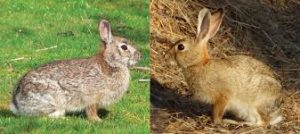 Most species within this group are introverted. They may seldom chase other rabbits if they pass near them. The cottontail’s behaviors are dull, and sometimes it’s just like with some other rabbit species. Most North American rabbit species are said to be introverted, but at times gatherings of these animals usually happened in favor of feeding areas. Rabbits are also known to be friendly when foraging. In Oregon, the eastern cottontail, which is the Sylvilagus Floridanus or Eastern Cottontail, reportedly shows aggressive action towards brush rabbits. It has been prominent that chases are usually introduced by nose touching or sometimes smelling.
Most species within this group are introverted. They may seldom chase other rabbits if they pass near them. The cottontail’s behaviors are dull, and sometimes it’s just like with some other rabbit species. Most North American rabbit species are said to be introverted, but at times gatherings of these animals usually happened in favor of feeding areas. Rabbits are also known to be friendly when foraging. In Oregon, the eastern cottontail, which is the Sylvilagus Floridanus or Eastern Cottontail, reportedly shows aggressive action towards brush rabbits. It has been prominent that chases are usually introduced by nose touching or sometimes smelling.
What’s The Average Lifespan Of A Brush Rabbit?
There is not much research done on the longevity of these bunnies; but, the average lifespan of these rabbits is 6 years. However, As mentioned earlier, they change different techniques to be safe from predators, encouraging them to have a longer lifetime. One more extra thing that nature has given them is their body color, their body color matches the brushes they live with, so it’s a hard row to hoe for a predator to find and kill them.
How Fast Does Brush Rabbit Grow?
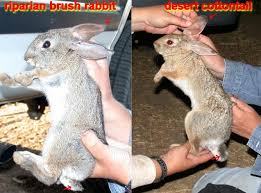 Full growth is gained once they are about 4 to 5 months after their birth. The newborn brush rabbits are able to breed in the following breeding season. A female rabbit’s gestation period lasts an average of 154 days. It is well known that the entire eastern poplar was led in the west to imitate and provide a source of food for the inhabitants.
Full growth is gained once they are about 4 to 5 months after their birth. The newborn brush rabbits are able to breed in the following breeding season. A female rabbit’s gestation period lasts an average of 154 days. It is well known that the entire eastern poplar was led in the west to imitate and provide a source of food for the inhabitants.
How Do You Bond With A Brush Rabbit?
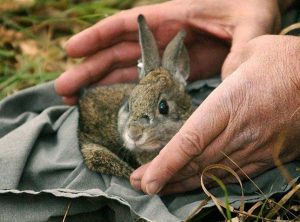 Rabbits begin with the predictability of a habit. Because rabbits are prey lovers, anything unexpected can quickly put them on the alert. To help them feel secure and guarded in their situation, you’ll want to take a daily habit or schedule a routine. A rabbit that feels safe in its surroundings will also be more confident with you. The most useful step you can take is to sit, rest or lay with your bunny. When you’re sitting on a stool, your rabbit will only talk with your legs. They’ll see you as a huge scary titan and are more likely to be accurate or run away in panic. Bring yourself down to their level so that you’re not hard to overlook your rabbit.
Rabbits begin with the predictability of a habit. Because rabbits are prey lovers, anything unexpected can quickly put them on the alert. To help them feel secure and guarded in their situation, you’ll want to take a daily habit or schedule a routine. A rabbit that feels safe in its surroundings will also be more confident with you. The most useful step you can take is to sit, rest or lay with your bunny. When you’re sitting on a stool, your rabbit will only talk with your legs. They’ll see you as a huge scary titan and are more likely to be accurate or run away in panic. Bring yourself down to their level so that you’re not hard to overlook your rabbit.
You can sit with your telephone and hang out on the floor with your rabbit. The purpose isn’t to fix your rabbit to come up to you and join; but, to give others the option. By resting silently on the floor in an area your bunny has a way to, they will get attracted and get up to you all on their own. It can be cute to show a rabbit some attractive tricks, but the actual idea of training a bunny is in the bond it builds between you and your rabbit. You’ll be spending a lovely time with each other while training. Your rabbit uses their brain to get a yummy treat and trusts that you will finally give it to them. You are growing personally close with your rabbit’s body language to help them pick out how to make the trick.
Final Thought
You must be thinking of keeping bunnies as a pet but are still confused, about whether it is the right pet for you or not. A rabbit can be a perfect pet for you but like any other pet, this little pet also needs special attention and therapy. Some useful tips explained above will help you give your little one a complete lifestyle that he deserves to stay healthy and comfortable.
https://www.rabbitproducersassociation.com/everything-you-need-to-know-about-brush-rabbit/https://www.rabbitproducersassociation.com/wp-content/uploads/2021/07/Brush-Rabbit-1024x681.jpghttps://www.rabbitproducersassociation.com/wp-content/uploads/2021/07/Brush-Rabbit-150x150.jpgUncategorizedBrush rabbits originate in North America’s western coastal areas (Mexico and United States), from the Columbia River of Oregon to the Baja California Peninsula’s southern tip. Its reach goes as far as the eastern parts of the Sierra Nevada and the Cascade mountain areas. These species populate dense, brushy...FizleenFizleen fizleenmazlanx@gmail.comAuthorNetherland Dwarf Rabbit
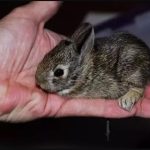

Leave a Reply